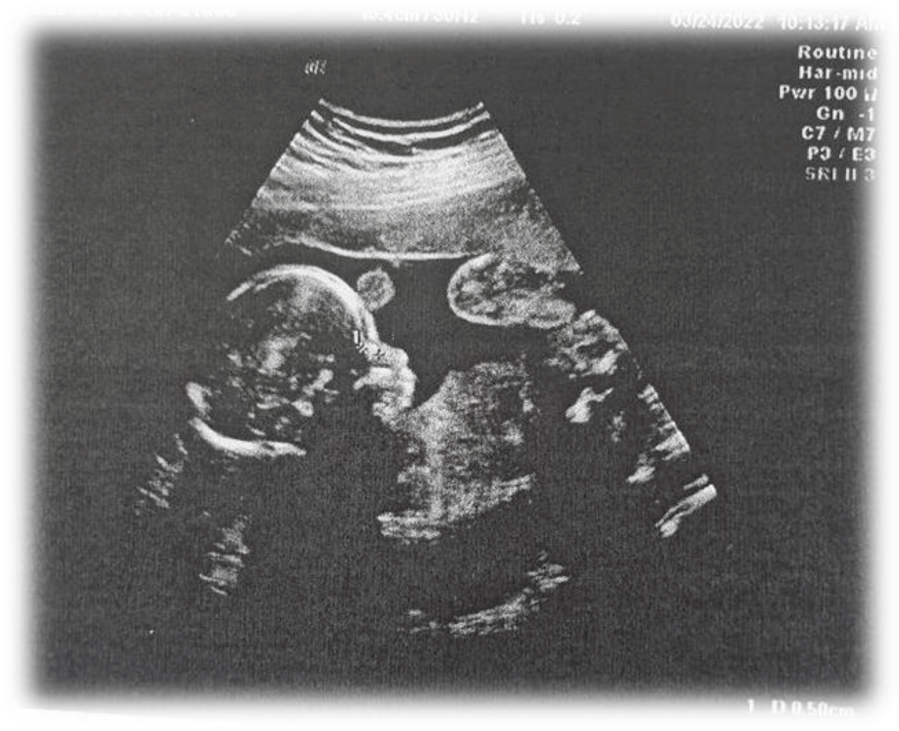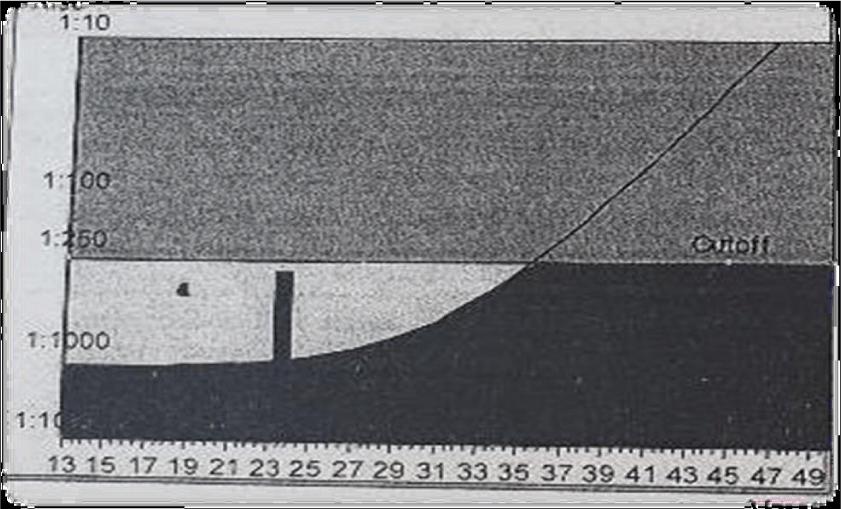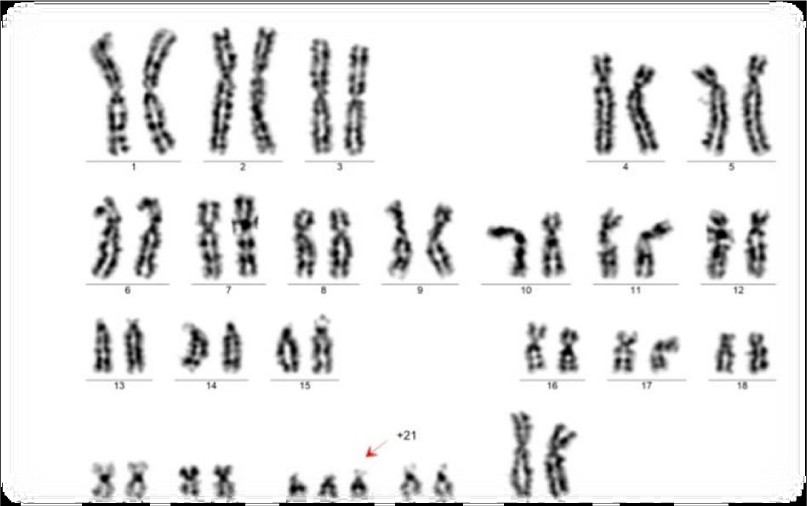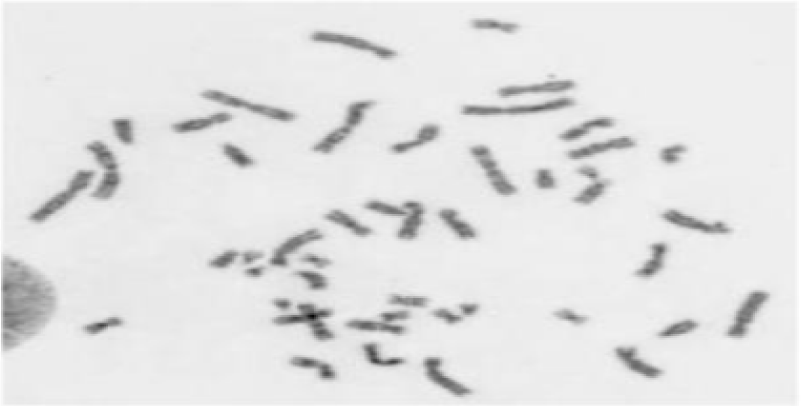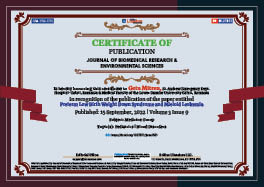Medicine Group . 2022 September 15;3(9):1039-1041. doi: 10.37871/jbres1551.
Preterm Low Birth Weight Down Syndrome and Mieloid Leukemia
Geta Mitrea1,2*
2Medical Faculty of the Lower Danube University Galati, Romania
- Leukemia
- Newborn
- Down syndrome
Abstract
Introduction: Langdon Down syndrome (Trisomy 21) is the most common genetic syndrome compatible with survival. Down syndrome is a chromosomal condition characterized by the presence of an additional copy of the genetic material on chromosome 21, either in full (trisomy 21) or partially, due to a translocation.
Objective: The importance of early detection of Down's Syndrome and highlighting the complications caused by this syndrome.
Material and methods: In our study, we analyzed the case of a premature LBW (Low Birth Weight), SGA (small gestational age), female, gestational age-36 weeks, birth weight 1800 grams, from a dispensary pregnancy with morphology performed and a double test, diagnosed with Down syndrome, the examination laboratory paraclinic establishes the diagnosis of acute myeloid leukemia. He is transferred to a pediatric oncohematology clinic and the diagnosis of myeloid leukemia is confirmed, for which chemotherapy is initiated.
Conclusion: The prognosis of congenital leukemia depends on the immunocytological form and the tolerance of the newborn to cytostatic therapy. Most of the time, their evolution is unfavorable, leading to death due to hemorrhages and infections that may occur.
Introduction
Congenital myeloid leukemia is the rarest form of leukemia in newborns with an incidence of 4.3-8.6 per 1 million newborns. Down syndrome is the most common genetic syndrome, a chromosomal condition characterized by the presence of an additional copy of genetic material on chromosome 21. This syndrome affects 1 in 1000 newborns. Hematological abnormalities in this syndrome include a variety of benign or malignant conditions. Patients with Down syndrome have an increased incidence of developing Acute Myeloid Leukemia (AML) and lymphoblastic leukemia [1-3].
Case Presentation
Newborn premature LBW, SGA, IUGR (intrauterine growth retardation), female sex, gestational age -36 weeks, IP-1.9, birth weight 1800 grams, length- 45 cm, cranial perimeter-28.5 cm, from dispensary pregnancy (mother Gesta I, Para I, taken into account by a specialist doctor, with morphologies performed and a double test performed - at 12 weeks of pregnancy, increased risk for Trisomy 21, fetal DNA - Trisomy 21 to be written as it was >1:50) extracted by surgery caesarean section (for fetal indication - intrauterine growth retardation, acute fetal distress - green amniotic fluid), score APGAR 8 at 1 minute, 8 at 5 minutes, presents after birth good general condition, normal reactivity, phenotype for Down syndrome (round face, slits eyelids oriented upwards and outwards, dysplastic ears, anterior nostrils, single palmar fold), moderate hypotonia, euglycemic, artificially fed with milk formula for premature infants (Figures 1,2).
During the clinical examination on the third day of life, a left parasternal gr I/6 systolic murmur was detected, without irradiation in the right hemithorax. Cardiothoracic X-ray does not show cardiomegaly, cardio-horacic index - 0.48.
Cardiac ultrasound: Left ventricular diastolic dysfunction, patent foramen ovale, grade I-II tricuspid reflux, patency of the arterial cup, slightly dilated pulmonary artery.
Paraclinical: Blood leukogram collected at 4 hours of life shows leukocytosis (WBC white blood cells-59240/µL). In the dynamic determinations, the number of leukocytes increases (67500/µL), on the blood smear, myeloblasts are present, blasts 60%, myelocytes 0% - acute myeloid leukemia observation. Inflammatory markers collected in dynamics negative, peripheral and central sterile cultures, transfer to a pediatric oncohematology clinic to confirm the diagnosis and initiate specialized treatment.
Karyotype: chromosomal analysis indicated the presence of a free and homogeneous trisomy 21. The presence of this anomaly is consistent with the clinical suspicion of Down syndrome. No other numerical and structural anomalies were identified. The chromosomal formula corresponds to the female genetic sex (Figures 3,4).
The blood count performed in the pediatric oncohematology clinic reveals hyperleukocytosis (WBC-66870//µL), neutrophilia-11091mm3, lymphocytes-13450/mm3, monocytes-39810/mm3, platelets-671000/mm3, hemoglobin-17.5 g/dl.
Medulogram performed - medullary infiltration - 60% with medium-sized blasts, without Auer bodies and generally without granulations, cytoplasm in a slightly larger amount, with 2-3 nucleoli.
Blood smear - cytological examination - polymorphonuclear cells -17%, lymphocytes -16%, metamyelocytes -2%, blasts -65%, slight hypochromia, anisopoikilocytosis (microcytes, polychromatophilicnormocytes, schizocytes, condocytes), increased platelets, schizocytes<1% .
The medulogram and immunophenotyping confirm the presence of megakaryoblasts in the peripheral blood and bone marrow and establish the diagnosis of myeloproliferative syndrome/acute neonatal leukemia in association with Down Syndrome.
Chemotherapy with Ara-C is initiated, which is well tolerated by the newborn. He was discharged from the pediatric oncohematology clinic in good general condition. Biological within permissive discharge limits: WBC-29260/mm3, neutrophils-4140/mm3, lymphocytes-12830/mm3, monocytes-12140/mm3, Hb-12.3 g/dl, platelets 410000/mm3.
Conclusion
Congenital acute myeloid leukemia is a rare pathology, with a high risk of mortality, mainly in the first month of life. The course of congenital leukemia is a rapid one towards deterioration and death due to hemorrhage and infection. The survival rate without events at 3 years is 50%, infection representing the main cause of mortality, therefore special attention is required to adjust the supportive, palliative and curative treatment, adaptation to special conditions of sepsis and asepsis, in an attempt to increase survival [2-4].
Conflict of Interest
The authors have no conflict of interest to declare.
Patient Consent
Written informed consent was obtained from the patient’s parents for publication of this case report and accompanying images.
References
- Pennella CL, Rossi JG, Baialardo EM, Alonso CN, Guitter MR, Sánchez La Rosa CG, Millán NC, Alfaro EM, Zubizarreta PA, Felice MS. Acute lymphoblastic leukemia in children with Down syndrome: Comparative analysis versus patients without Down syndrome. Arch Argent Pediatr. 2018 Aug 1;116(4):e500-e507. English, Spanish. doi: 10.5546/aap.2018.eng.e500. PMID: 30016023.
- Prakash KP, Rau ATK, Bhat ST, Rau AR. Congenital Leukemia – A Diagnostic Dilemma. Indian J Med PaediatrOncol.2008;29(4):41-43.
- Mohammed Al-Biltagi. Down Syndrome from Epidemiologic Point of View. www. ecronicom.com
- Roy A, Roberts I, Norton A et al. Acute megakaryoblasticleukaemia (AMKL) and transient myeloproliferative disorder (TMD) in Down syndrome: a multi-step model of myeloid leukaemogenesis. Br J Haematol. 2009;147:3-12.
Content Alerts
SignUp to our
Content alerts.
 This work is licensed under a Creative Commons Attribution 4.0 International License.
This work is licensed under a Creative Commons Attribution 4.0 International License.





